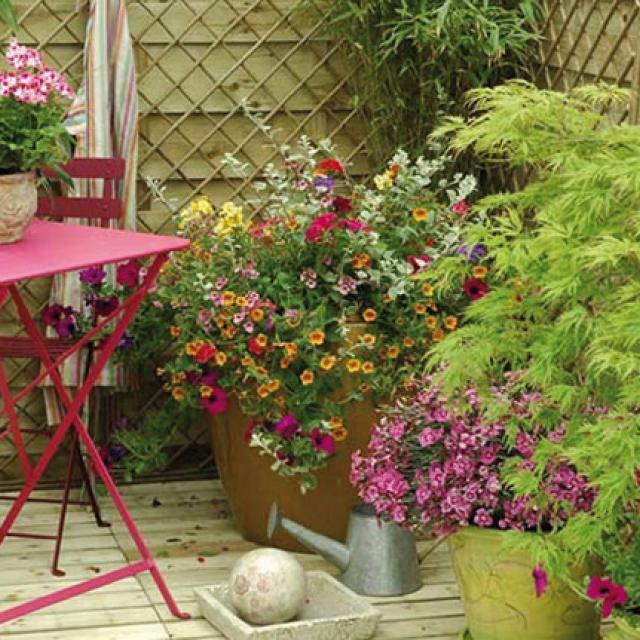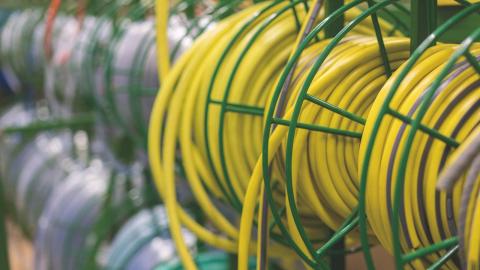Returning from your holidays is always an anxious moment if you have plants on the balcony or on the terrace. What state will they be in? Have they been scorched by the sun? Or, adversely, have they been submerged in water? To avoidhavinganynasty surprises whenyou return, think about installing an automaticwatering system? There are a number of solutions on the marketwhichwouldallow the plants to bewateredcorrectly in your absence.

Holiday wateringsystems for balconies and terraces: how to make the right choice?
Beforebuying the equipmentrequired for supplyingyour plants with water whenyou are away, take the time to look intoyourrequirements… Feel free to make a sketch of yourterrace or yourbalcony, showing the plants present, the location of the water supply, power sockets… This willgiveyou an idea of the type of watering system youwillbe able to install.
The choice of automaticwatering system to beinstalleddepends on a number of differentfactors:
Length of absence, type of plantation, the region‘sclimatic conditions, water supplyintake (possibility of connecting to a tap or a water storagefacility, flow-rate, pressure…), budget.
Multi-pot systems (to beconnected to a water container). Withthese self-watering kits, a pumpis not needed to withdraw the water from the reservoir… The ceramiccones are connected to one another by a flexible hose to ensurethat the water moves by gravity via a syphon pipe submerged in a container. The water reservoirshouldbeinstalled at around 75 cm above the level of the plants to bewatered.
Water retainingstorage gels. Being in contact with the soil, these cellulose fibres thatmake up the water-retaining gels slowlydegrade and swell and thengradually release the water, providing up to 30 days’ self-watering. You will have the choice of sticks of gel to beplanteddirectly in the soil or sachets of water granules to be mixed with the compost.
The flower pots, boxes and tubs with a water reservoir. Particularlysuitable for plants thatrequire a lot of moisture, these containers have a doublebottomwhichholds the water, makingit self-watering for up to 12 weeks. The water appliedwhenfilling the pot isreleased to the plant by capillary action. The separationfrom the soilisachievedwith a grid or a traywithpunchedholes. A gauge willsometimesallow for the water level to bemeasured in the reservoir. In the event of rainfall, the surplus water will drain away via the overflow. In some cases, itcouldbenecessary to place a drainage layer at the bottom of the pot.
The micro-irrigation (or drip) systems. By discharging the water directly to the foot of the plant, the micro-irrigation system allows for the grower to apply the preciseamount of water required for the healthydevelopment of the plants, whilereducinglosses in the soil, evaporationinto the atmosphere and the emergence of weeds… This results in a saving of 50% of the water used in traditional irrigation. As thesesystemsoperate at low pressure, itcouldbenecessary to connect a pressure reducer at the water intake.
The drip irrigation kits (tap-connected). Being programmable and customisable according to the needs, the drip irrigation kits offer the possibility of forming more or lesscomplex networks of pipes, to whichdifferentkinds of drippers can beconnected (self-regulating, adjustable and fixed flow). They are generallysoldwith the full range of equipment (irrigation control box, pipes, connections, drippers…) necessary for supplying water to around 10 flowerbeds or shrubs, 10 pot plants or 20 plants for the vegetablegarden.
Automatic sprinklers (to beconnected to a water reservoir). You don’t have a water supply on yourbalcony or on yourterrace? Don’t panic… Wenow have automaticdrip irrigation systems (withcontroller) equippedwith an electricpumpthatallowsyou to collect water in a container (drum, bucket, waste bin or evenbathtub…). Generallyprovidedwitharound 25 drippers, 10 m of tubing and 1 controller, theseautomatic sprinklers are soldwith or without a water reservoir.
Micro-porous (or soaker) hoses. Ideal for watering the flowerbeds or young plants, these flexible rubber hoses allow the water to seepthrough the pores alongtheirwholelength. Easy to install, the micro-porous hoses or soaker hoses are connecteddirectly to the water supply. You must think about cleaningthemregularlybecausetheyclog up easily.
Integrated drip tubes (or in line drippers).
These are large PVC pipes of around 13 mm in diameterwithdrippersalreadybuilt in at regularintervals (30, 40 or 50 cm depending on the models). Thesebuilt-indrip tubes alsoallow for the water to beapplieddirectly to the foot of the plants, withoutwetting the foliage.
• Tip: Cover your pipes with a layer of mulch…. Apart frombeing more aesthetic, itwill help to reduce the evaporation of the water.
The accessories
The controllers. Beingbattery-operated, the controllersallow for the operator to select the duration and sometimes the start time and frequency of the irrigation. Generally-speaking, they are providedwithpre-set programmes, makingthemeasier to use. More recently, we have seenmodelsthatoperatewithsolarenergy, evenwhenthereislittle sunlight. You will have the choice of controllersconnected to the water supply (known as ‘tap-connected’) or remotemodels (controlledremotely).
• Tip: Programme your irrigation system in such a waythatitdoes not start up during the hottestperiods of the day to avoidlossesthroughevaporation and so the droplets do not scorch the leaves by magnifying the sun’s rays. Furthermore, humidity and heat are factorsthat encourage the growth of weeds and moulds.
Sensors and electronicrain gauges. Thesetwomeasuringtools tell the controller to whichthey are linked, when to stop or reduce the run time of the irrigation, especiallywhenitisraining… You willthusavoid the unnecessary use of the water duringyour absence!
The rainwaterrecovery systems. Connected to a pump and an automaticwatering kit, the rainwater collectors allowyourbalcony and terrace to have a water supply – even in your absence – withouthaving to waste the drinking water.
Placedunder a gutter or downpipe, theseabove-ground tanks or tubs allow for the storage of 2,000 litres of rainwaterwithout the risk of deterioration, whilebeingprotectedfrom the weather, the sun and debris (deadleaves…). Theyexist in manyforms, in all shapes, sizes and styles:wood, plastic, as a cask or in the form of an amphora or with a brick walleffect…. Theirprice varies from €50 to €600 according to the quality and material.
Didyoualso know thatthere are water tanks buried underground (or placed in the subsoil), which can store up to 9,000 litres of water. Their installation requires a lot of work and theircostisrelatively high (between €1,000 and €6,000). However, itis possible to receive a 25% taxcreditprovidedyou have the equipmentinstalled by a professional.

